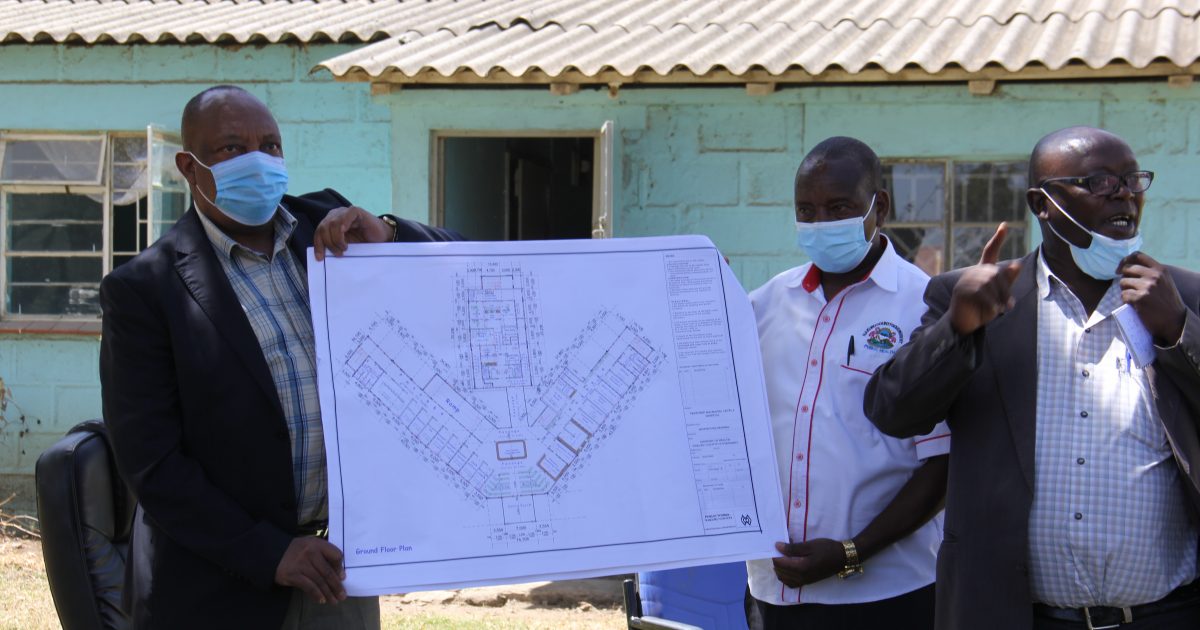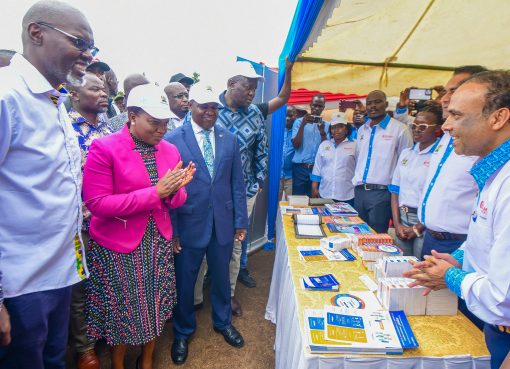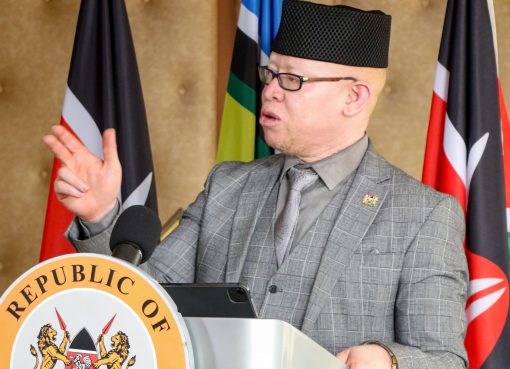Provision of health care services in Nakuru has received yet another major boost after the County Government launched construction of the seventh Sh. 157million state-of-art medical facility within the devolved unit at the Njoro Level 4 Sub-County Hospital.
The standalone complex will have a modern maternity and neonatal wing, a pharmacy, x-ray machines and modern laboratories and is expected to be operational within the next ten months. The facility will house an outpatient complex, accident and emergency unit, an imaging center and theatres among other essential services.
Speaking during the groundbreaking ceremony, County Executive Committee Member for Health Dr Zachary Kariuki Gichuki said the outpatient complex will also offer the highest standard of medical training and top quality specialized healthcare services.
He said the new facility had been designed to offer health care services to 100,000 residents from the Sub-County and its adjoining areas.
The hospital also caters for injured patients received from the notorious Sobea-Salgaa-Sachangwan-Mau Summit-Makutano accident black spot along the Nakuru-Eldoret highway.
Initially, congestion affected service delivery, forcing most patients, especially accident victims to be referred to the Nakuru Level Five Hospital.
“The facility will have the trauma/accident and emergency, obstetrics, gynecology, ophthalmology, pharmacy, radiology and radiotherapy and minor surgery theatres among other departments.
“For the last three years, Governor Lee Kinyanjui’s administration has laid emphasis on provision of quality and affordable medical services to all residents. The facility will supplement the 90 percent complete Sh. 650million outpatient facility at the Nakuru Level 5 Hospital and the Sh. 40 million center of excellence for mental health care under construction at the Gilgil Sub-County Hospital. The latter will be operational in less than six months.”
Other health care facilities nearing completion include the Sh. 157million Molo Sub-County Hospital, the Sh. 60million outpatient complex at Olenguruone Health Center and Sh. 60million Level 4 health facility at Karuswa in Bahati Sub-County,” explained Dr Gichuki.
The modern Sh. 330 million outpatient complex at the Naivasha Sub-County Referral Hospital is expected to be operational within the next 3 months. The project is a joint-partnership of the County and National governments and Kenya Electricity Generating Company (KenGen).
Njoro Level 4 Sub-County Hospital which serves patients from Molo, Kuresoi, Njoro and parts of Rongai Constituency has previously been on the spot for poor services and congestion among other challenges, a situation the Health CEC says is set to become a thing of the past.
Dr Gichuki said investment in modern outpatient units across the devolved unit was part of the county administration’s efforts to revamp the county’s health sector and improve efficiency in emergency response.
The County administration he said was keen on decongesting the Nakuru Level 5 Teaching and Referral Hospital by modernizing all Sub-county hospitals.
The Level 5 hospital serves more than eight counties in the South Rift region including Bomet, Kericho, Samburu, Baringo, Nyandarua, and Laikipia where 2,000 patients are treated daily, 750 of them being inpatients.
Dr Gichuki noted malaria, diseases of the respiratory system, skin diseases, diarrhoea, and intestinal parasites were major challenges at outpatient facilities around the county. The new facility he noted would provide easily accessible health services for Kenyans in the county and beyond.
“Huge investment in outpatient health facilities is still needed to improve health services across the county. We are looking at avenues towards increasing budgetary allocation and looking for donor support.
There is a need to realize that frequent health problems including accidental injuries, urinary tract infections, eye infections, rheumatism, and other infections are handled by outpatient facilities. Combined, these ten leading conditions account for nearly four-fifths of the total outpatient cases reported,” noted the CEC.
He added: “55 to 60 percent of health care needs in Nakuru are due to non-communicable diseases such as diabetes, hypertension, cancer, mental illnesses, malnutrition, and asthma among others. We have prioritized proper provision health care services for these elements in designing, staffing and equipping our new health facilities.”
According to the county Health department, the outpatient wing will also offer diagnostic tests, dental health care and dermatology among other critical services.
“We are experiencing an increased influx of referrals from other hospitals and health centers within the larger Rift Valley. Our strategy is not only to cope with the numbers but mainly to offer quality and affordable disease diagnostic, management and treatment services.
The laboratories, pharmacy and X-ray facilities within the standalone facility will be purely for the out-patients and it will ensure faster and more efficient process of laboratory tests, X-ray services and dispensing of drugs. Initially, both the in-patients and the out-patients have been competing for the same facilities,”said Dr Gichuki.
The county runs 184 health facilities including dispensaries, health centers, level four hospitals and the Nakuru Level Five Hospital.
The chairman of Njoro Level 4 Sub-County Hospital board Stephen Karanja Kiarie expressed optimism that the project would be completed within the set timelines.
Kiarie admitted that congestion had been a challenge to the facility, noting that this would be addressed when the new wing is completed.
“We are happy that the contractor is already on the site. Funds set aside for the project are intact and the project will continue as planned,” the Chairman said.
At Sh. 6 billion, the health department in Nakuru got the lion’s share of Sh. 15billion 2020/2021 budget. This translates to nearly 36 percent of the budget.
A chunk of the funds has been allocated towards construction of such new health infrastructure and procurement of modern medical equipment.
by Ane Mwale/Estel Muthoni




